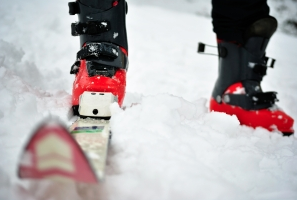 Diabetics must take good care of their feet. Diabetes tends to reduce blood flow to the feet and legs. As a result, the feet do not get enough oxygen and nutrients. At the same time, nerve damage (peripheral neuropathy) could cause numbness in the feet. Fortunately, the following foot care tips can help you keep your feet healthy can clean during the cold winter months.
Diabetics must take good care of their feet. Diabetes tends to reduce blood flow to the feet and legs. As a result, the feet do not get enough oxygen and nutrients. At the same time, nerve damage (peripheral neuropathy) could cause numbness in the feet. Fortunately, the following foot care tips can help you keep your feet healthy can clean during the cold winter months.
Footwear
Winter foot care tips start here. Get shoes that provide proper padding, warmth, and protection from the elements. Avoid shoes that do not have enough room for your toes to wiggle. Tight shoes tend to restrict blood flow, which increases the risk of developing foot ulcers. According to Michael Shlonsky, a foot specialist at Cleveland Clinic, up to 20% of diabetics end up in a hospital with serious feet ulcers.
Dry Feet
Keep your feet dry at all times. This means avoiding sloshing through snow or puddles of water even if you are wearing shoes. Moisture or water could seep and collect between your feet and socks. Damp feet and shoes are a good breeding ground for unwanted bacteria and possibly toenail fungi.
Quit Smoking
If you are diabetic and a smoker, consider quitting. The American Academy of Orthopaedic Surgeons AAOS says that smoking damages blood vessels. This reduces their ability to deliver oxygen and nutrients to the feet.
A Good Foot Bath
Wash your feet with warm (not hot) water at least once every day. Make sure you test the water with your hands before washing your feet. This is because your feet may be unable to feel the heat generated by hot water. Too much hot water could scald your feet causing second or third degree burns that could take ages to heal. The temperature of your water should be between 90° and 95° F.
Check Your Feet
Check your feet every day for sores, cuts, swelling, or any injuries. The National Diabetes Education Program says that diabetics can have injuries or infected toenails, without feeling pain. If you have an infected toenail or injury, seek treatment immediately.
Keep Your Toenails Trimmed
This helps you avoid picking up infections that could lead to serious complications. The rule of thumb is to cut your nails straight across. Don’t cut the corners to avoid causing cuts or cracks where bacteria or fungi could hide and cause infections. If you cannot reach your feet, let a professional like a doctor or trained pedicurist trim your toenails.
Keep Your Feet Moisturized
Moisturize your feet to avoid skin breaks, especially between and under the toes. It’s good to apply some moisturizer between your toes after taking a bath. But, don’t apply too much, to avoid encouraging bacterial and fungal growth. Consult your doctor and ask them to recommend a good moisturizer.
Be Active
During winter, you may be unable to go outside to jog, run, or ride your bike. This doesn’t mean that you should laze around all day. Stay active to keep blood flowing to the feet. For example, you should put your feet up when sitting down. If you have a spare room, use the space to perform exercises such as jumping rope and press-ups. Avoid crossing your legs for extended periods of time, and wearing tight socks.
In summary, most diabetics tend to have poor blood circulation in the legs and feet. Remember, a few good winter foot care tips for diabetics include checking feet every day for injuries/sores, keeping feet dry, washing your feet with warm water, and keeping toenails trimmed.


